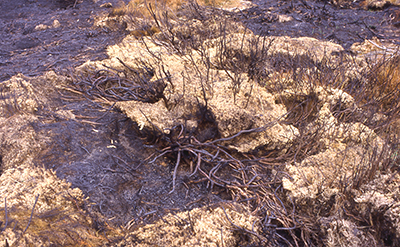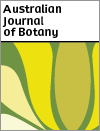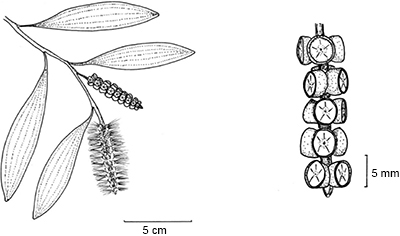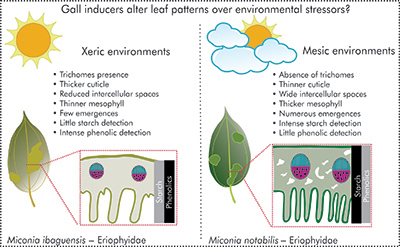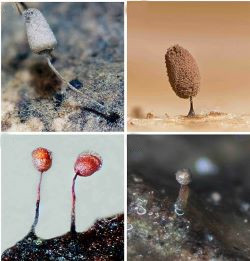Australian Journal of Botany
Volume 71
Number 3 2023
Peatlands of the Australian Alps are important ecologically and recognised in conservation legislation but they are increasingly threatened by fire. Our review of long-term studies in peatlands shows that species composition recovers within a few years of fire but species cover, including the dominant moss layer, does not. A fire frequency less than 20 years may cause permanent change in this plant community but resilience might be enhanced by removing other threats, in particular trampling by feral animals. Photo credit: Keith McDougall.
Germination of M. quinquenervia in the field is episodic, and tied to specific environmental parameters. High losses occur at the seedling establishment phase. A series of laboratory- and field-based investigations showed that the most favourable sites for recruitment are permanently moist, with salinity lower than 15 dS m−1, sheltered from wave action and desiccation. There is an inhibitory effect of Casuarina leachate on germination.
Anatomical traits of Eriophyidae leaf galls on Miconia ibaguensis and M. notabilis are linked to the anatomical adaptations of the host plants to distinct climate conditions. M. ibaguensis is adapted to a xeric environment, the Brazilian cerrado, whereas M. notabilis is adapted to the humid forests of the equatorial region. The histochemical and anatomical features of the host plants that determine differences among galls are important to the gall-inducing Eriophyidae success in distinct environments.
Slime moulds are a unique group of fungus-like amoebozoans that feed on bacteria and other microorganisms. Some slime moulds appear to be restricted largely to certain substrates, and we provide herein the first study of slime moulds associated with Australian cypress pines. We report 23 species in 15 genera.
 , Jennie Whinam, Fiona Coates, John W. Morgan, Neville G. Walsh, Genevieve T. Wright and Geoff S. Hope
, Jennie Whinam, Fiona Coates, John W. Morgan, Neville G. Walsh, Genevieve T. Wright and Geoff S. Hope
